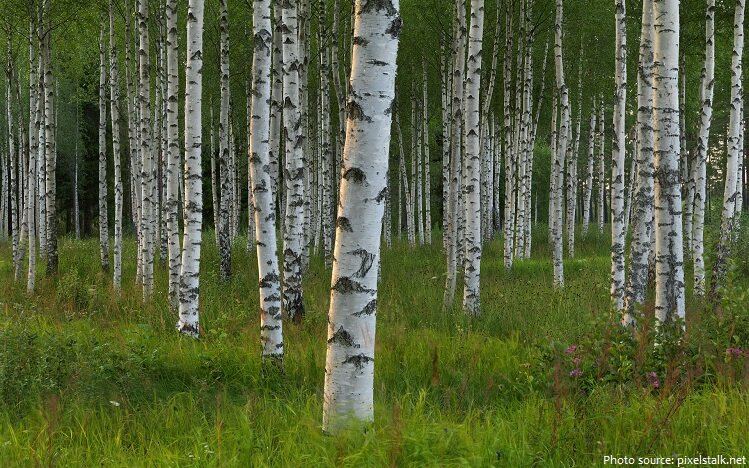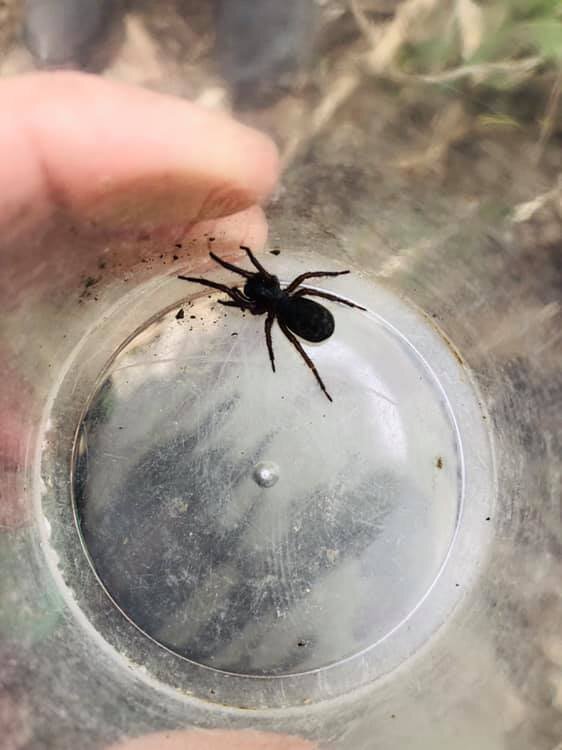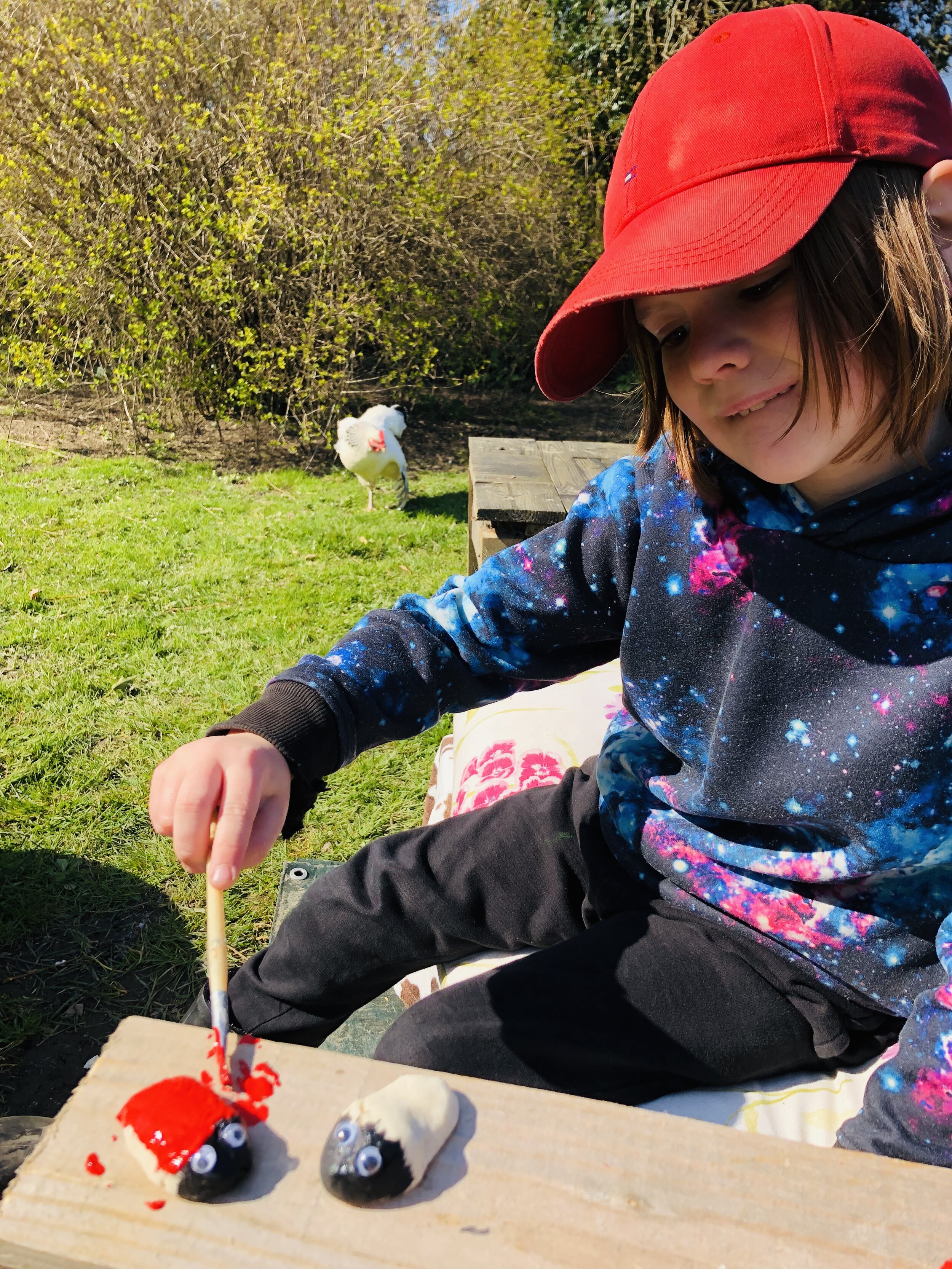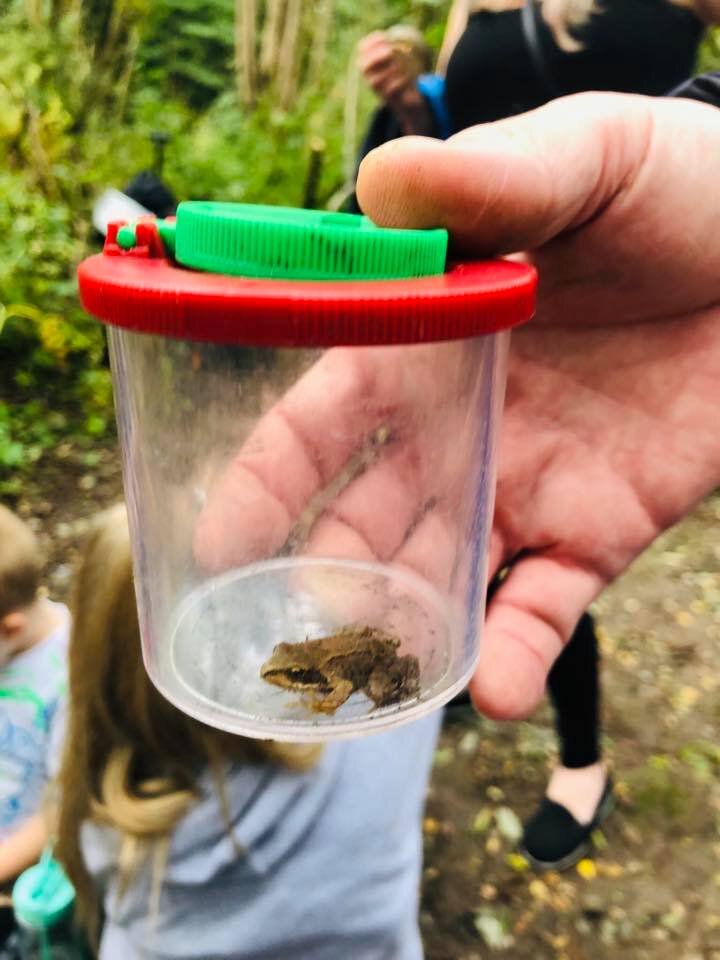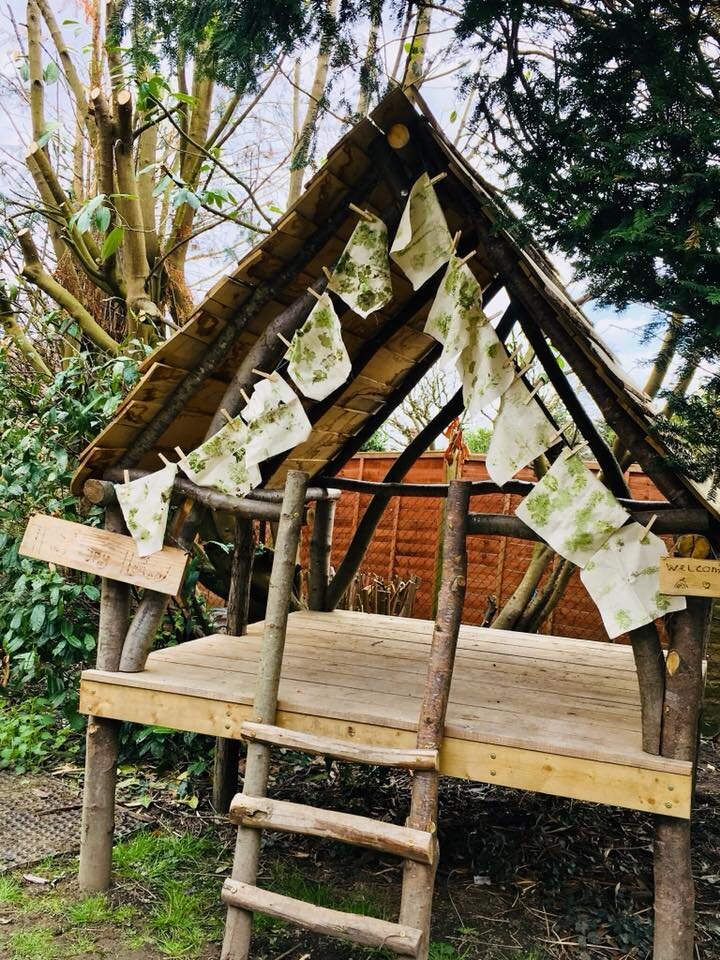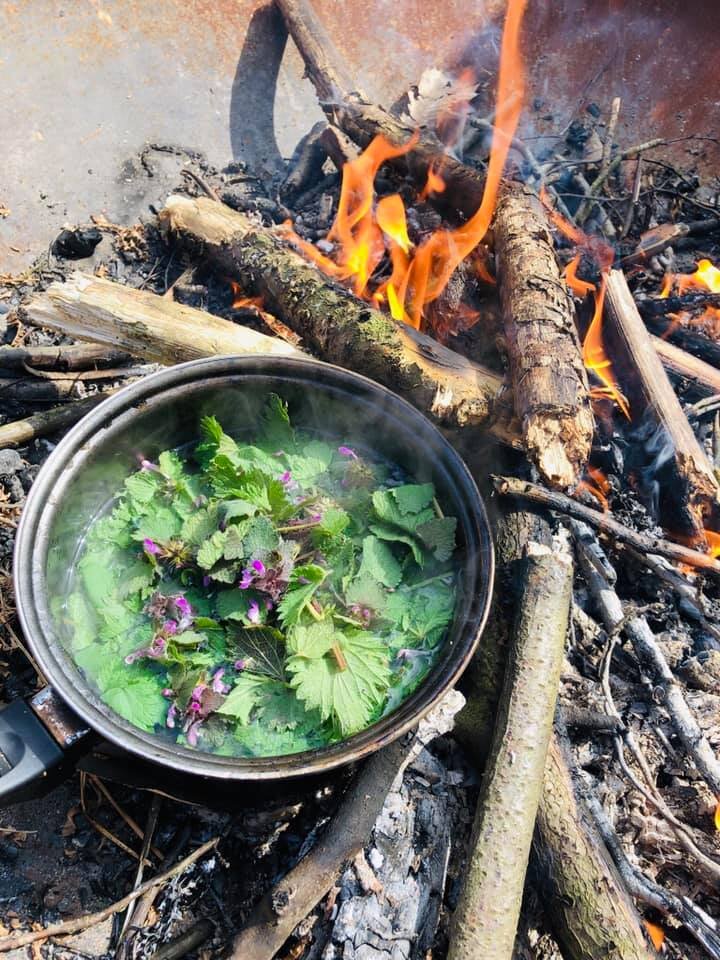Cress Egg Heads
/By Mel Evans
This isn’t an activity we have ever done at Forest School, but its something I love to do at home with my own children in the Spring.
One of the reasons this activity appeals to me is that it offers many of the things we value at Forest School. For example the activity is open ended and although we are offering an idea it is up to the child where they take it; there is lots of creativity involved; getting the egg to balance requires some engineering; and there is a bit of mud play as soil and seeds are spooned into the egg. It also encourages us to watch over the week as the seeds grow, much as we watch nature as the woods unfold throughout the seasons.
Add to the list that the activity involves Lego and what is not to love!
Last years Egg Heads after the cress seeds had grown.
Start by collecting the materials and laying them out on the table as an invitation to create. Below is the list of materials I set out, and we later found some feathers. You can use what ever crafty bits you have at home though.
Washed and dried discarded egg shells, pva glue, googly eyes pens and Lego.
The children got stuck in and by the end of the morning we had a family of (quite different) Egg Heads! We carefully took the eggs outside and found a bag of compost before spooning soil into the eggs with a tea spoon. Holding the delicate eggs while getting the soil in the right place was a good test of fine motor skills and required a bit of concentration.
Once the soil was in the eggs we sowed some seeds. We didn’t have any cress seeds at home this year so we decided to experiment. We have added Wild Flower seeds to two of the eggs and Pea seeds to the other two. We put the eggs in a warm place so the seeds will germinate. We will water them daily and watch to see how they develop. Do show us your Egg Heads if you try this activity!
















